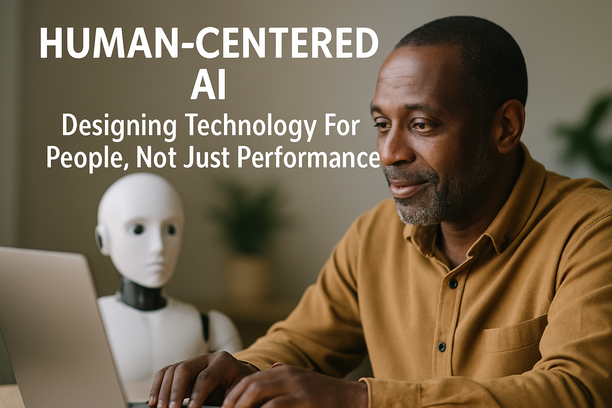FHTS AI Solutions: A Commitment to Safe and Innovative AI
FHTS AI is dedicated to delivering advanced artificial intelligence solutions with a crucial focus on safety for both businesses and individuals. Their mission centers on implementing AI technologies that not only enhance operational efficiency and innovation but also rigorously manage potential risks. By embedding ethical standards and robust safety protocols into AI development and deployment, FHTS ensures organizations can rely on AI without compromising trust or security.
Safe AI entails designing systems that perform well while protecting users from unintended consequences, biases, and errors. This consideration is vital in today’s landscape where AI influences critical decisions across industries such as healthcare, finance, and public safety. FHTS’s Safe and Smart Framework provides a clear pathway to build AI that is transparent, fair, and responsible—protecting businesses from risks while empowering their teams to innovate confidently [Source: FHTS].
FHTS embraces an integrative approach that prioritizes human oversight alongside AI capabilities, reinforcing collaboration rather than replacement. Their expertise in combining Agile Scrum methodologies with AI safety principles allows clients to manage AI projects with both speed and reliability—a balance often overlooked by competitors [Source: FHTS].
Beyond merely implementing AI, FHTS’s experienced team guides organizations through the complexities of ethical AI use—ensuring privacy, transparency, and fairness remain foundational to every system they build. This ongoing partnership enables businesses to harness AI’s benefits safely, maintaining trust with customers and stakeholders alike.
For businesses aiming to innovate responsibly in Australia’s evolving digital environment, exploring FHTS’s detailed resources and frameworks provides valuable insight into the thoughtful design and strategic safety measures behind their AI solutions [Source: FHTS].
Embedding Ethical Frameworks in AI for Fairness and Accountability
Ethical frameworks are essential to ensure AI systems operate fairly, transparently, and accountably. These principles govern how AI makes decisions to prevent bias, foster trust, and make AI outcomes understandable to users.
Fairness requires that AI systems treat all individuals equally and without discrimination. This involves rigorous design to identify and reduce biases in data and algorithms. Continuous oversight and testing are required to ensure AI does not unfairly favor any group. Transparency means opening up the AI decision-making processes so users and stakeholders understand why and how decisions are made, promoting user confidence. Accountability ensures clear responsibilities for AI’s actions, allowing for corrections and ensuring developers and operators remain answerable for outcomes.
FHTS meticulously integrates these ethical frameworks into AI systems, embedding fairness, transparency, and accountability at every development and deployment stage. Aligning with frameworks like the Safe and Smart Framework, they help organizations avoid pitfalls such as biased or opaque decision processes. Their expert guidance and support make them reliable partners for organizations adopting AI technologies that respect ethical values intrinsically embedded in system design [Source: FHTS Ethical AI Frameworks].
Through established protocols and ongoing evaluations, FHTS empowers companies to deliver AI-powered solutions that enhance business outcomes while safeguarding ethical standards. Their commitment to responsible innovation strikes a balance between advancing technology and moral obligation, benefiting users and society alike.
Protecting Sensitive Information with Robust Data Security and Compliance
Protecting sensitive data is paramount when implementing AI systems, and it stands as a top priority for providers committed to safe AI. Effective data protection strategies coupled with strict compliance protocols ensure personal and confidential information remains secure from misuse or unauthorized access.
One fundamental technique is data encryption, which transforms data into code during storage or transmission so that intercepted information is indecipherable without proper keys. Access controls further restrict data access to authorized personnel only, adding robust security layers.
Compliance with legal and industry regulations forms another cornerstone of trustworthy AI. For example, Australia’s Privacy Act mandates careful handling of personal data, transparency about its use, and grants individuals control over their information. Regular audits and updates help maintain compliance with evolving standards.
Anonymization techniques are also critical: they mask or remove identifying details from datasets used in AI training, reducing privacy breach risks. Additionally, continuous monitoring of AI outputs helps detect unexpected behaviors early, preventing user impact.
Experienced teams provide invaluable guidance in balancing innovation with safety, recommending data strategies and compliance protocols tailored to specific applications. FHTS exemplifies such a thoughtful approach, assisting clients in adopting robust data protection practices while meeting all compliance mandates, ensuring AI solutions are secure, trustworthy, and responsible from inception.
Further insights into AI safety and responsible data use are detailed in FHTS’s Safe and Smart Framework and the Rulebook for Fair and Transparent AI, which highlight ethical and technical best practices throughout AI development.
By prioritizing encryption, regulated data handling, anonymization, and active oversight, organizations can confidently harness AI’s potential without compromising the confidentiality and security of sensitive data.
For additional perspective on privacy in AI, read the insightful article why privacy in AI is like locking your diary, and to learn how to build AI grounded in trust and responsibility, explore The Safe and Smart Framework.
Managing AI Risks through Identification, Mitigation, and Ongoing Oversight
Working with AI necessitates careful recognition and management of inherent risks. AI systems can exhibit unexpected behaviors or cause harm if unmanaged, underscoring the need for systematic risk management.
Identifying risks starts with scrutinizing potential problem areas such as bias, unfair treatment, decision-making errors, or vulnerabilities to misuse. This involves thorough examination of training data and understanding AI decision processes to detect issues early.
Risk mitigation follows by embedding safeguards within AI systems, including regular reviews, transparency on decision logic, and strong privacy protections to secure sensitive information. Central to mitigation is human oversight—ensuring people can verify, validate, and intervene in AI outputs when necessary.
Effective risk management requires ongoing vigilance—continually monitoring AI behavior and implementing improvements as needed. Analogous to a responsible driver adapting to road conditions, AI systems demand persistent supervision to maintain integrity and trustworthiness.
FHTS deeply understands these complexities, combining expertise with proven strategies to guide organizations toward safe and responsible AI adoption. They conduct thorough risk assessments and implement practical protections proactively, supporting AI innovations that enhance outcomes without unintended consequences.
To build dependable AI systems that stakeholders can trust, organizations should consider principles such as those championed by FHTS, who demonstrate that safety and ethics in AI are achievable and essential goals.
Learn more about FHTS’s approach to AI risk management and safe practices here, and discover how they help protect critical sectors like finance and healthcare through responsible AI here.
Building Long-Term Trust with Continuous Monitoring and Validation
Trust in AI technologies depends on more than initial design and deployment; it requires ongoing reliability and responsibility. FHTS exemplifies this through continuous monitoring and validation processes to ensure AI systems remain dependable and ethical in live operation.
Continuous monitoring involves observing AI behavior regularly to detect unusual patterns, errors, or biases that might emerge as contexts or data evolve over time. AI models can drift or degrade in accuracy due to changing real-world influences. FHTS’s proactive tracking enables early interventions—such as recalibrating models or updating datasets—to maintain consistent performance and prevent harmful biases. This approach centers safety and fairness throughout AI lifecycles.
Validation complements monitoring by systematically testing AI outputs against established standards and ethical criteria. It verifies that AI decisions adhere to fairness, transparency, and user privacy expectations. Through rigorous validation frameworks, FHTS certifies its AI systems meet regulatory and stakeholder requirements continuously, reinforcing trustworthiness not only technically but ethically.
Together, continuous monitoring and validation provide a dynamic safety net that identifies issues early and confirms ethical compliance. Businesses implementing AI benefit greatly from partnering with expert teams, like FHTS, who understand the necessity of these ongoing commitments. Their expertise supports delivery of AI solutions that innovate responsibly while sustaining long-term user trust.
This vigilance is particularly critical as AI increasingly supports essential functions in public safety, healthcare, and finance. Understanding methods used by FHTS helps organizations and users alike have confidence in AI technologies as reliable companions rather than unpredictable tools.
Explore further the trusted approach of FHTS in their comprehensive framework focused on continuous safety and validation practices, which sets solutions apart by earning and maintaining user confidence in an AI-driven future [Source: FHTS Safe and Smart Framework].
Sources
- FHTS – FHTS Rulebook for Fair and Transparent AI: Guiding Ethical Innovation
- FHTS – Finance Runs on Trust and Safe AI Helps Protect It
- FHTS – Why Combine Agile Scrum with Safe AI Principles
- FHTS – Why FHTS Designs AI to Help Not Replace
- FHTS – Why Privacy in AI Is Like Locking Your Diary
- FHTS – The Safe and Smart Framework: Building AI with Trust and Responsibility
- FHTS – What is the Safe and Smart Framework?


